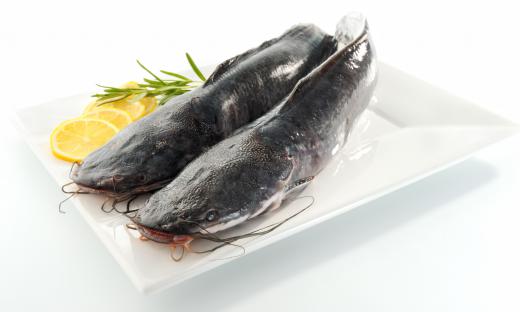A tankbuster refers to a very large fish that arguably doesn't belong in the aquarium trade. Some tankbusters may be so large as to outgrow even the largest tanks kept in the home.
Others of more moderate lengths may be able to find a good quality of life in a 250 gallon (946 liter) or larger tank. If your fish needs an enormous tank, it's a tankbuster.

Unfortunately there is a lot of misinformation about how large some popular fish can grow. Many retailers misinform customers because they are in the business of selling fish, not counseling against buying them. If you ask about a fish that will grow to enormous proportions, you might get one of the following answers:
- It'll stay small because your tank is small.
- It would take years for it to get big and by then it'll be dead.
- These fish grow big in the wild but not in an aquarium.
- You can bring it back here when it gets too big.
- You might see others that big but this one won't get that big.

The truth is, fish that are large in the wild will grow just as large in an aquarium, regardless of tank size. In a cramped environment it might grow slower, but it will keep growing. It can take fish well over a decade to reach their mature length, but if you're a good aquarist and keep them healthy, they will get there.
Caring for large fish is a big expense and can be a lot of work. And while the fish store may promise they'll take the fish back if it gets too big, that is not something you should count on. People are often put in the position of having to contact public aquariums to take pets that they can no longer care for. If you are trying to place freshwater species, it is particularly hard to find public aquariums to take them, as most have salt water tanks only.

Many popular species of fish are tankbusters. Sharks are a case in point. Most shark species will grow far larger than a home aquarium can accommodate. Even the popular bala shark can reach lengths of 16" (40cm) which will require a minimum 250 gallon (946 liter) tank when mature. The pacu, a popular disc-shaped fish, will also outgrow home aquariums reaching 30" (76cm) or the size of a trash can lid!
Various catfish get enormous as well. The common plecostomous reaches well over 12" (30cm), but is peaceful and doesn't require as much room as most fish its size because it does little swimming. However the paroon shark, which is not a shark but a catfish, will reach over 3.6' (1.2m) in length, is highly aggressive, active, and will require a minimum 900 gallon (3407 liter) tank when mature. This is much greater than most aquarists can provide, yet countless 3-4" (7-10cm) attractive juvenile paroons are sold every day to unsuspecting aquarists.
Before buying any fish you will do well to research it thoroughly. Use at least three different reliable sources to cross-reference information, and avoid using a retailer as one of the sources. Various fish atlases are available in bookstores or at the local library, and online fish datatbases are available as well. But beware that sometimes information is simply incomplete or is not known to any degree of certainty. For instance, the life spans of many fish is not known, but what is known is that tankbusters have a tendency to live a very long time. Some species of catfish are thought to live more than 50 years! It is not uncommon for an aquarist to have a fish that is 16 years old and still growing.
Caring for a tankbuster from juvenile into adulthood will mean shedding many tanks for larger ones. It may also mean that years down the road you are forced to find a public aquarium for the fish you have forged a bond with for so long. Consider too that every juvenile tankbuster that gets purchased reinforces the selling of these fish by retailers. And unfortunately very few of these fish will ever live into adulthood, and many will languish in inadequate quarters along the way.
Still, if you are determined to own a tankbuster then make sure you choose one that will not outgrow your ability to care for it, and settle in to enjoy your aquatic friend for life.
